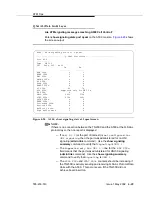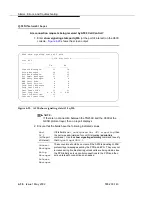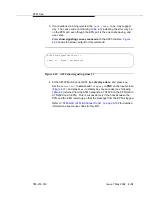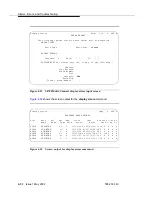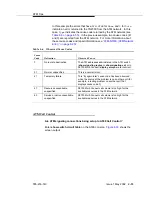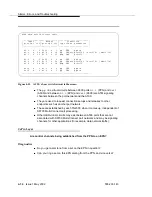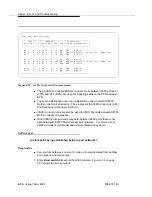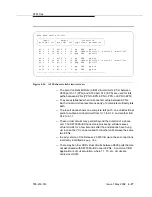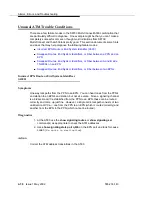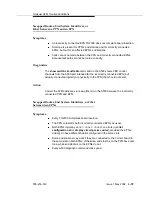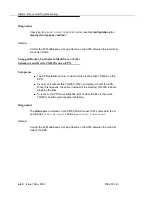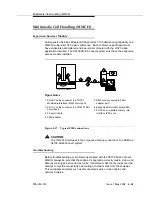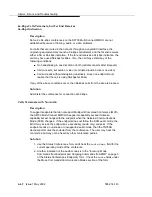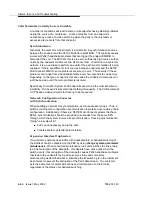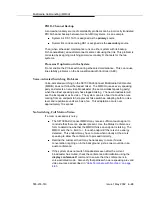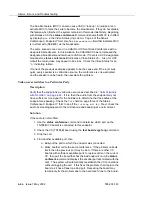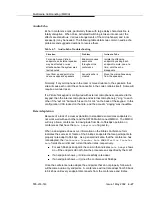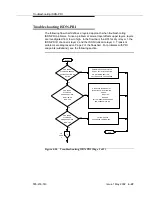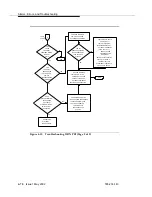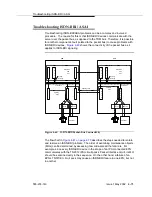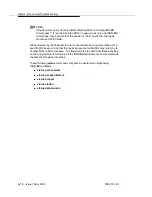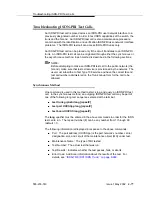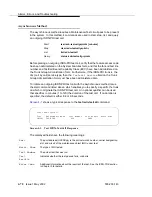
Multimedia Call Handling (MMCH)
Issue 1 May 2002
4-63
555-233-143
Some Parties Cannot Be Heard by Others
(Audio Subsetting)
Description
Problems where varying subsets of the conference hear different things may have
problems with the various summing resources/groups that are in use.
Traditionally, these faults are caused by the server not cleaning up the
connections properly. Isolation and diagnosis should focus on the VC resources
in use by that conference.
Solution
1. Use the status conference command to list the VC resources in use by
this conference. Try a hot replacement of any VC boards in use (which
refreshes the VC translations), and move every audio connection to a
different VC port.
2. If the problem still exists, try dropping the conference and then bringing the
conference back up again. Not only does this refresh VC translations, but
uses different timeslots as well.
3. If the problem still exists, suspect a hardware problem. If practical, wait for
the S8700 Multi-Connect MMCH to be idle (no active conferences), and
then check the circuit packs for active (amber) LEDs. If any of these are
unexpected, such as on a VC board, try replacing the board and then
bringing the conference up again.
Calls Terminate with No Video
Description
Generally, loss of video can be divided into two types. The first occurs when the
S8700 Multi-Connect MMCH switches to the endpoint, but nobody sees them.
The receivers see either “black” video or a frozen image of the previous speaker,
depending on the codec of the manufacturer. The type occurs when the S8700
Multi-Connect MMCH does not switch to an endpoint.
Solution
In the first type described above, wiring problems, power to the camera, or video
encoder circuit pack problems in the codec are typical causes.
In the second type, no video from an endpoint typically occurs because it is not a
valid video source. This can be checked by looking at page 1 of the Status
Conference x Endpoint y Vid form under the Capability section. In this section, a
“y” or “c” suggests that the endpoint has video. An “e” means ept has not
declared any video capability in cap set, “n” is audio only, and “blank” means
audio add-on.
Also check page 1 of the Status Conference x Endpoint y Vs form for indication of
the video state for the endpoint values.
Summary of Contents for S8700 Series
Page 50: ...Maintenance Architecture 555 233 143 1 26 Issue 1 May 2002 ...
Page 74: ...Initialization and Recovery 555 233 143 3 12 Issue 1 May 2002 ...
Page 186: ...Alarms Errors and Troubleshooting 555 233 143 4 112 Issue 1 May 2002 ...
Page 232: ...Additional Maintenance Procedures 555 233 143 5 46 Issue 1 May 2002 ...
Page 635: ...status psa Issue 1 May 2002 7 379 555 233 143 status psa See status tti on page 7 406 ...
Page 722: ...Maintenance Commands 555 233 143 7 466 Issue 1 May 2002 ...

